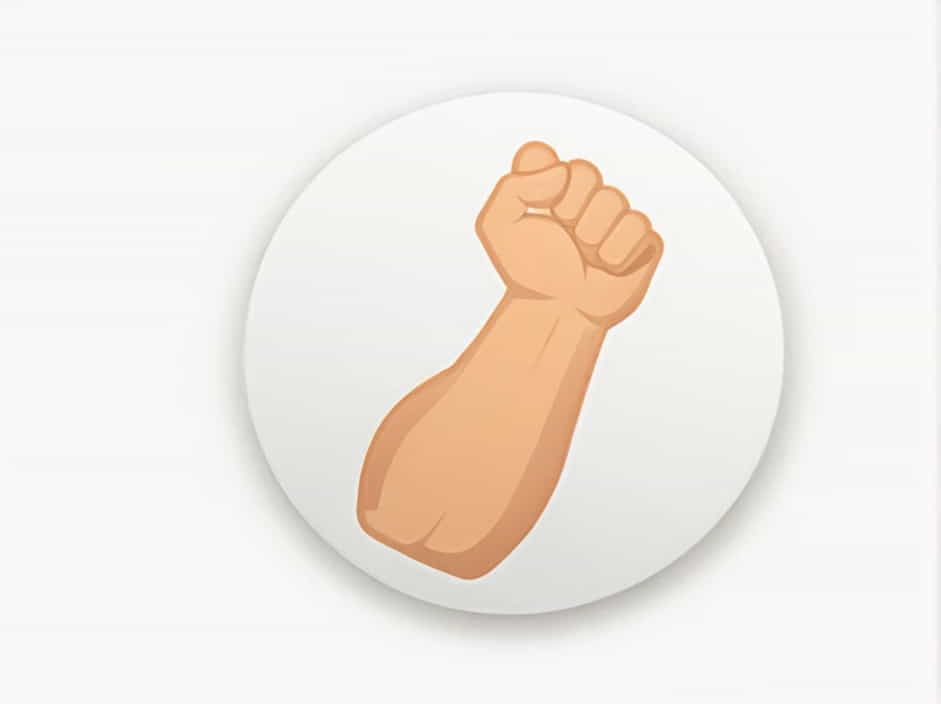When we lift our arm out to the side, we rely on a specific muscle to make that movement happen. The primary muscle responsible for abducting the arm is the deltoid muscle. This muscle is essential for shoulder movement, upper body strength, and overall mobility.
Understanding the deltoid muscle and its role in arm abduction is important not only for students learning anatomy but also for athletes, fitness enthusiasts, and anyone recovering from shoulder injuries. In this topic, we will explore the anatomy, function, exercises, injuries, and care tips for the deltoid muscle.
What is Arm Abduction?
Definition of Abduction
In anatomy, abduction refers to moving a body part away from the midline of the body. When you lift your arm out to the side, that’s called arm abduction.
Importance of Arm Abduction
This movement is essential for daily activities such as reaching for objects, waving, or performing overhead tasks. It is also crucial for various sports like swimming, tennis, and basketball.
The Main Muscle That Abducts the Arm
The Deltoid Muscle
The deltoid muscle is the primary muscle responsible for arm abduction. It sits on the top and outer part of the shoulder, forming the rounded contour of the shoulder. The deltoid is a large triangular muscle that covers the shoulder joint, making it one of the most recognizable muscles in the human body.
Origin and Insertion of the Deltoid
- Origin: Clavicle, acromion, and spine of the scapula
- Insertion: Deltoid tuberosity of the humerus
This attachment allows the deltoid to pull the upper arm bone (humerus) upward, creating abduction at the shoulder joint.
Parts of the Deltoid Muscle
Anterior Deltoid
Located at the front of the shoulder, this part assists in flexion (lifting the arm forward) and medial rotation of the arm.
Lateral Deltoid
The lateral or middle deltoid is the main part responsible for abducting the arm. When you lift your arm to the side, this is the section doing most of the work.
Posterior Deltoid
Situated at the back of the shoulder, the posterior deltoid helps with extension (moving the arm backward) and external rotation of the arm.
How the Deltoid Works During Arm Abduction
Role in the First 15 Degrees
At the very start of abduction (first 15 degrees), the supraspinatus muscle—part of the rotator cuff—initiates the movement.
Role After 15 Degrees
Once the arm passes 15 degrees, the deltoid muscle takes over and continues to lift the arm until it reaches a fully abducted position (about 90 degrees). Beyond 90 degrees, the shoulder blade (scapula) also contributes by rotating upward.
Other Muscles That Support Arm Abduction
Supraspinatus
This small but important rotator cuff muscle starts the abduction process, especially when the arm is close to the body.
Serratus Anterior and Trapezius
These muscles help move and stabilize the scapula, allowing the deltoid to work more efficiently as the arm moves higher.
Common Injuries Affecting the Deltoid
Deltoid Strain
Overuse or sudden overload can cause small tears in the muscle fibers, leading to pain, swelling, and reduced mobility.
Rotator Cuff Injuries
Although not part of the deltoid itself, rotator cuff problems can affect how well the deltoid performs abduction. When the rotator cuff is weak or injured, the deltoid may have to work harder, leading to muscle imbalances.
Shoulder Impingement
When the space between the acromion and the rotator cuff tendons narrows, the deltoid may struggle to lift the arm smoothly. This can cause pain during abduction, especially at mid-range.
Exercises to Strengthen the Deltoid for Arm Abduction
1. Lateral Raises
This classic shoulder exercise targets the lateral deltoid, strengthening its ability to abduct the arm. Use light to moderate weights for controlled movement.
2. Overhead Shoulder Press
Pressing weights overhead works all parts of the deltoid, with particular emphasis on the anterior and lateral fibers.
3. Reverse Fly
This exercise focuses on the posterior deltoid, helping maintain balance between the front and back of the shoulder.
4. Supraspinatus Raises
Strengthening the supraspinatus supports the deltoid’s ability to abduct the arm from a neutral position.
Stretching the Deltoid for Flexibility
1. Across-the-Body Stretch
Pulling one arm across the chest stretches the posterior deltoid.
2. Doorway Stretch
This opens the anterior deltoid, helping relieve tightness caused by poor posture or repetitive front arm movements.
3. Overhead Triceps Stretch
This stretch also gently elongates the lateral deltoid when done with correct positioning.
How Posture Affects Deltoid Function
Forward Head and Rounded Shoulders
Poor posture can alter the position of the scapula, reducing the deltoid’s mechanical advantage during abduction. This can lead to compensation patterns, muscle fatigue, and pain.
Proper Shoulder Alignment
Keeping the shoulders back and down and the spine neutral allows the deltoid to function optimally, improving both strength and range of motion.
Conditions That Limit Arm Abduction
Frozen Shoulder
This condition, also known as adhesive capsulitis, drastically reduces shoulder mobility, including abduction.
Nerve Injuries
Damage to the axillary nerve, which supplies the deltoid, can severely impair the ability to abduct the arm. This is sometimes seen after shoulder dislocations or surgeries.
Arthritis
Osteoarthritis or rheumatoid arthritis affecting the shoulder joint can make abduction painful and difficult due to inflammation and joint damage.
When to See a Doctor
- Persistent shoulder pain that limits abduction.
- Weakness when trying to lift the arm.
- Clicking, popping, or catching during movement.
- Swelling or bruising after injury.
The deltoid muscle is the primary muscle that abducts the arm, allowing us to lift our arms away from the body for a wide range of functional activities. Supported by the supraspinatus and scapular stabilizers, the deltoid plays a central role in shoulder movement, strength, and stability.
Keeping the deltoid strong, flexible, and properly aligned is essential for pain-free movement, optimal performance in sports and fitness, and healthy aging. By understanding how this muscle works and taking steps to care for it, anyone can enjoy better shoulder health and improved upper body mobility.
